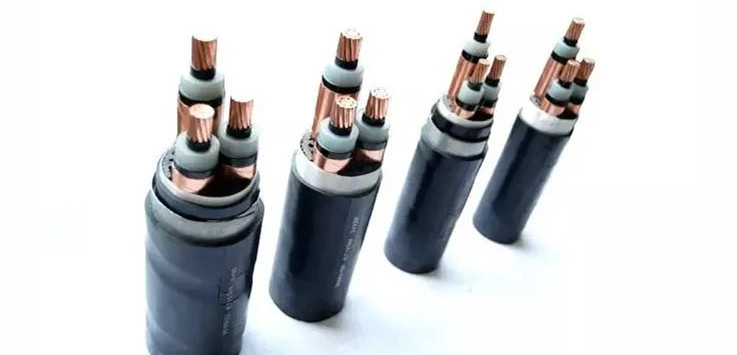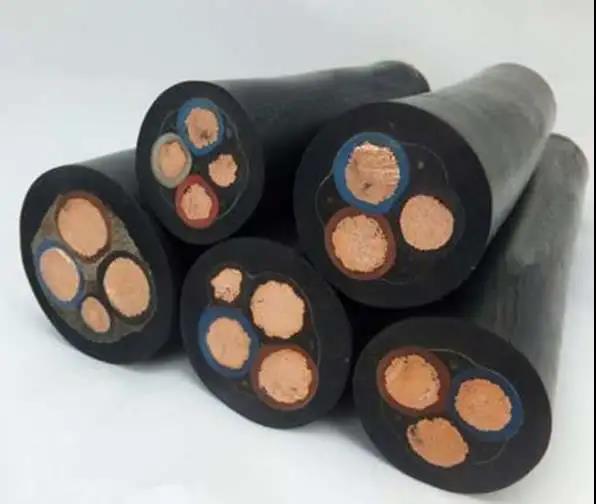1、 Wire and AAC Cable material consumption
The conventional calculation method of copper weight without conversion: sectional area * 8.89 = kg / km
For example: 120 * 8.89 = 1066.8kg/km
1. Quantity of Conductor:
(Kg/Km)=d^2 * 0.7854 * G * N * K1 * K2 * C /
D = diameter of copper wire, g = specific gravity of copper wire, n = number of wires, K1 = twisting rate of copper wire, K2 = twisting rate of core wire, C = number of insulated core wires
2. Insulation amount:
(Kg/Km)=(D^2 – d^2)* 0.7854 * G * C * K2
D = outer diameter of insulation d = outer diameter of conductor g = specific gravity of insulation K2 = twisting rate of core wire C = number of insulation core wires
3. Dosage of external coating:
(Kg/Km)= ( D1^2 – D^2 ) * 0.7854 * G
D1 = finished outer diameter d = upper process outer diameter g = insulation specific gravity

4. Amount of wrapping tape:
(Kg/Km)= D^2 * 0.7854 * t * G * Z
D = outer diameter of upper process t = thickness of cladding g = specific gravity of cladding z = overlap ratio (1 / 4lap = 1.25)
5. Winding amount:
(Kg/Km)= d^2 * 0.7854 * G * N * Z
D = copper wire diameter n = number of wires g = specific gravity z = twist in rate
6. Weaving amount:
(Kg/Km)= d^2 * 0.7854 * T * N * G / cos θ
θ = Atan (2 * 3.1416 * (D + D * 2)) * mesh / 25.4/t
D = diameter of braided copper wire t = number of ingots n = number of bars per ingot g = specific gravity of copper
Specific gravity of material:
89; Cu -8; 50; Ag -10; Aluminum – 2.70; Zinc-7.05; 90; Ni -8; 30; tin-7; Steel -7.80; Lead-11.40; Aluminum foil mylar-1.80; 35; Myra -1.37
PVC-1.45; LDPE-0.92; HDPE-0.96; PEF (foaming) – 0.65; FRPE-1.7; Teflon(FEP)2.2; Nylon-0.97; PP-0.97; PU-1.21
55; cotton belt -0; PP rope -0.55; Cotton yarn-0.48
2、 Calculation formula of material outside conductor
1. Sheath thickness: outer diameter before extrusion × 035 + 1 (for power cables, the nominal thickness of sheath of single core ABC Cable shall not be less than 1.4mm, and that of multi-core cable shall not be less than 1.8mm)
2. On line measurement of sheath thickness: sheath thickness = (perimeter after sheath extrusion – Perimeter before sheath extrusion) / 2 π
Or sheath thickness = (perimeter after sheath extrusion – Perimeter before sheath extrusion) × zero point one five nine two

3. Thinnest point of insulation thickness: nominal value × 90%-0.1
4. Thinnest point of single core sheath: nominal value × 85%-0.1
5. Thinnest point of multi-core sheath: nominal value × 80%-0.2
6. Steel wire armor: number=
{π ×( Outer diameter of inner sheath + diameter of steel wire) ×λ)
Weight = π × Wire diameter? ×ρ× L × Number of roots ×λ
7. Weight of insulation and sheath = π ×( Pre extrusion outer diameter + thickness) × thickness × L ×ρ
8. Weight of steel strip = {π ×( Outer diameter before wrapping + 2 × Thickness – 1) × two × thickness ×ρ× L}/(1+K)
9. Weight of tape = {π} ×( Outer diameter + number of layers before wrapping × Thickness) × Number of layers × thickness ×ρ× L}/(1±K)
Where: K is the overlap rate or gap rate, if it is overlap, it is 1-k; In case of gap, it is 1 + K
ρ Is the specific gravity of the material; L is the length of cable; λ Stranding coefficient
